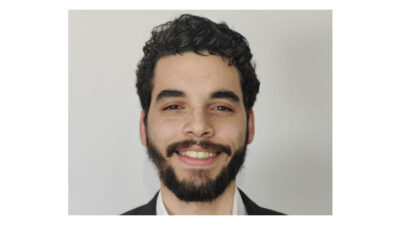San Francisco Bay and Sacramento/San Joaquin Delta are the U.S. West Coast's largest estuary encompassing some 1,600 sq. miles (4,144 sq. km.) of waterways and draining over 40% of California's fresh water. In Sausalito, Calif., a miniature version of the estuary, known as the San Francisco Bay Model exists.
KEY WORDS
Process control & instrumentation
Data acquisition
Flow sensing/measurement
Simulation
San Francisco Bay and Sacramento/San Joaquin Delta are the U.S. West Coast’s largest estuary encompassing some 1,600 sq. miles (4,144 sq. km.) of waterways and draining over 40% of California’s fresh water.
In Sausalito, Calif., a miniature version of the estuary, known as the San Francisco Bay Model exists. Built in the late ’50s by the Army Corps of Engineers to a scale of 1000:1 on the horizontal plane and 100:1 on the vertical plane, the model covers 13,000 ft2(1,208 m2). Its simulation of tidal conditions, currents, and river flows allow examination of changing hydraulic conditions on the bay. Attention is paid to water levels, mixing of fresh and salt water, and current flows through the narrows of the estuary. Data, collected from the model, determine environmental impacts of dredging new shipping channels, and constructing new levees and dams.
Time to upgrade
Requirements for an upgrade included expansion of the I/O system, implementation of automated tide control, two-second automatic data collection, and availability of test data on the Internet.
Cal-Bay Systems (San Rafael, Calif.) was awarded the contract to provide system integration and programming of the PC-based system with hardware and software from National Instruments (NI, Austin, Tex.).
The data acquisition system monitors three water parameters: depth, salinity, and flow. These parameters determine environmental salt-water intrusion, water quality problems associated with circulation patterns, optimization of sediment disposal from channel dredging, erosion, and areas of potential flooding.
Salinity can be determined by measuring conductivity and temperature. Two thermistors average inflow and outflow to compensate for low-water flow past the probe. Flow through conductivity cells use three in-line platinum electrodes and measure resistance between the center and the two outer electrodes to determine conductivity.
Portable water level detectors are located around the model. Pre- and post-test activities include pooling the model at different heights to calibrate and verify each water level detector.
Velocity meters use acoustic Doppler technology to determine velocity of passing particulate. Because model water is not “dirty” enough, glass beads are added to simulate particulate matter and improve acoustic reflection.
A software application was developed to gather and store analog test data every two seconds in an open database-compliant format. A second application uses stored calibration coefficients to convert the raw stored data to normalized data. Velocity and salinity meters are calibrated in a laboratory using laptop computers. Sensor calibration and coefficient data is downloaded into the test database for use by simulation algorithms.
Bay Model data analysis requires comparing data from different test databases. Microsoft Visual Basic and ActiveX applications permit users to make data requests and perform analysis using web browser technology. A map of the model allows Internet users to zoom to different sensor locations and select data from user-specified sensors and dates.
A 75 hp (56 kW) pump located about 17 “model” miles off-shore provides a flow rate of 5 ft3/sec (1.5 m3/sec) into the model. Software algorithms control three butterfly valves to maintain tide control.
Oscillations caused by high-frequency ripples (waves) are removed by a tide control algorithm that uses the average of three level sensors as the measured variable. The tide control algorithm uses repetitive tidal data over one lunar day as a setpoint for a PID loop.
Biggest challenge
In large hydraulic systems, controller oscillations tend to propagate as waves bounce off walls and reverberate throughout the system. Since automated tide control had never been achieved, the learning curve was steep. LabView’s analysis tools permitted frequency analysis of oscillation harmonics and a refined understanding of hydraulic system dynamics eventually lead to a well-tuned PID tide control loop.
Studies conducted using the new Bay Model control system include determining the need to rebuild the Sacramento levees destroyed by El Nino during the winter of 1997-98 and testing the environmental effects of expanding the San Francisco Airport runways into the bay.



